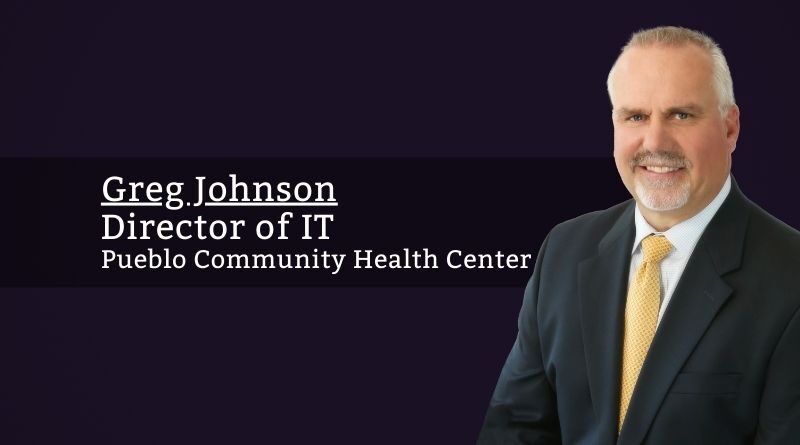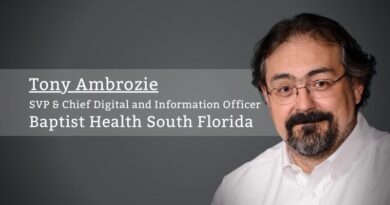Back to Basics: Building a Solid IT Infrastructure for an FQHC
By Greg Johnson, Director of IT, Pueblo Community Health Center
The challenge to bring world-class technology solutions to any business in any industry is not a new one. The Healthcare sector is no different. An FQHC, or Federally Qualified Health Center, is a uniquely designated outpatient clinic that offers comprehensive health services, regardless of a person’s ability to pay. FQHCs are government-designated and must meet a stringent list of criteria to qualify for FQHC status. One of the major criteria is a data-driven, quality assurance program. A robust Electronic Medical Record (EMR) platform is needed to collect, review, and report this data to provide the necessary reporting.
Most EMR platforms are extremely complex systems that may contain an Electronic Health Record (EHR), Electronic Practice Management (EPM), a Dental module, and a sophisticated interface engine. Needless to say, this is the primary line of business application used in the Health Center. Users of the application require extensive training and spend most of their working hours using this system. It is an understatement to say that a reliable, stable, and available platform is essential to the entire workforce. These systems are centered around a primary database and then operate using a data-in/ data-out concept where clinical staff is “charting” patient information at the point-of-care.
SYSTEMS INFRASTRUCTURE
In most instances, even for small to medium size clinics, the database capacity can start to approach several terabytes of data. Because of this, it is most likely that a facility will only have one main Data Center to house servers and storage area networks (SAN) for the EMR platform. The hardware itself needs to be scalable to constant growth and be powerful enough to maintain a high-performance level. All hardware needs to be fault-tolerant and have redundancy for all critical components. Considerations need to be put in place to manage power outages using an uninterruptable power supply (UPS), an automatic transfer switch (ATS), and a primary backup generator. Having these disaster recovery systems in place can keep a system running 24/7.
Due to the constant use throughout the day and the volume of data being passed between the client and the server, virtualization is a must. Using a virtualization platform offered by one of the industry-leading companies will diminish the impact of large data transmission. It is recommended to virtualize the host servers on the backend as well as virtualize the application and/or operating system on the client-side.
NETWORK INFRASTRUCTURE
Even with virtualization, the stress on the network will be evident. Many FQHCs operate in multiple locations and offer a variety of specialized clinical services like primary care, oral care, and behavioral health services. In addition, there are administrative support services requiring access to the EMR system. Because of the diversity of services and the dispersed locations, good network infrastructure is required. Regardless of the type of connection: wireless, fiber, or otherwise; a high
bandwidth point-to-point connection is recommended where available. Many FQHCs support rural areas and patients where access to modern technology may not be available. Using a data center as a hub and connecting each remote location as a spoke is the preferred network layout.
Most clinical staff are very mobile and work from a portable device like a laptop or a tablet. When moving from patient rooms to nursing stations to provider offices, system interruptions occur between wireless access points. Building an enterprise-grade wireless system with true mesh capabilities will eliminate these types of system “drops.”
SUPPORT SERVICES
While the infrastructure described in this article may not be scaled to that of a large, geographically dispersed corporation with thousands of employees, the system complexity and required uptime are nearly parallel. It is essential to have a strong customer service-based end-user support system and at least one specialist with skills in networks, systems, or both.
SECURITY
In Healthcare, especially in a government-funded facility, a solid security plan with documented policies and procedures is a requirement. In smaller organizations, it is often challenging to have these types of skills on staff, and for those that do, their skills may be highly focused on one specific area. Using a third-party vendor can supplement the security program and provide the necessary reporting needs often required by an FQHC.
With today’s rapidly evolving technology, the basic fundamentals of a solid infrastructure often get overlooked in exchange for shiny new tech. Building a solid infrastructure foundation is the first step towards systems availability and reliability. It will also lead to productive clinicians and will ultimately lead to better patient care and outcomes.



